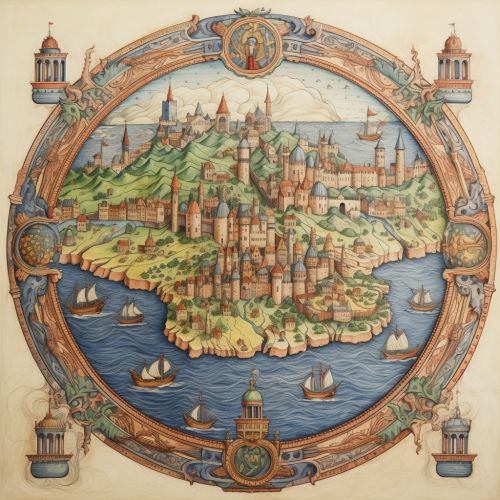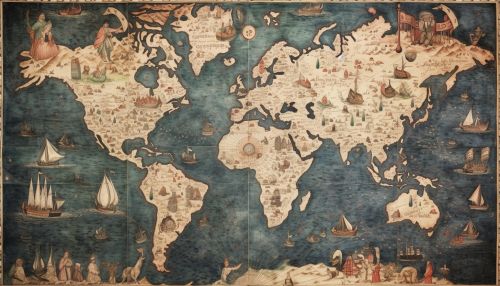Ebstorf Mappa Mundi
Introduction
The Ebstorf Mappa Mundi is a medieval world map that was created in the 13th century. It is one of the most detailed and comprehensive examples of a mappa mundi, a genre of medieval and early modern maps that depicted the world in a symbolic and theological framework. The Ebstorf Map is named after the town of Ebstorf, Germany, where it was discovered in the late 19th century.


Historical Context
The Ebstorf Mappa Mundi was created during a period of intense cartographic activity in Europe. The 13th century was a time of significant exploration and discovery, with the expansion of European knowledge about the world beyond the Mediterranean and the development of new navigational technologies. The Ebstorf Map reflects this broader context of exploration and discovery, but it also embodies the specific religious and intellectual culture of its time and place.
Description
The Ebstorf Mappa Mundi is a large, circular map, measuring about 3.5 meters in diameter. It is drawn on 30 goatskin vellums and is richly colored with a variety of pigments. The map depicts the world as a disc, with Jerusalem at the center and the east at the top, following the traditional orientation of medieval maps.
The map is filled with a wealth of detail, including depictions of cities, rivers, mountains, and seas, as well as a wide range of human and animal figures. The map also includes numerous biblical and historical scenes, such as the Garden of Eden, the Tower of Babel, and the Crucifixion.
Interpretation
The Ebstorf Mappa Mundi is not just a geographical map, but also a theological and cosmological representation of the world. The map reflects the medieval Christian worldview, with its emphasis on the spiritual and symbolic significance of the earthly realm. The map's depiction of Jerusalem at the center of the world, for example, reflects the central role of the Holy City in Christian theology and history.
Significance
The Ebstorf Mappa Mundi is one of the most important examples of medieval cartography. It is not only a valuable historical document, but also a rich source of information about the worldview and culture of the medieval period. The map's combination of geographical, historical, and theological elements provides a unique window into the medieval mind.
